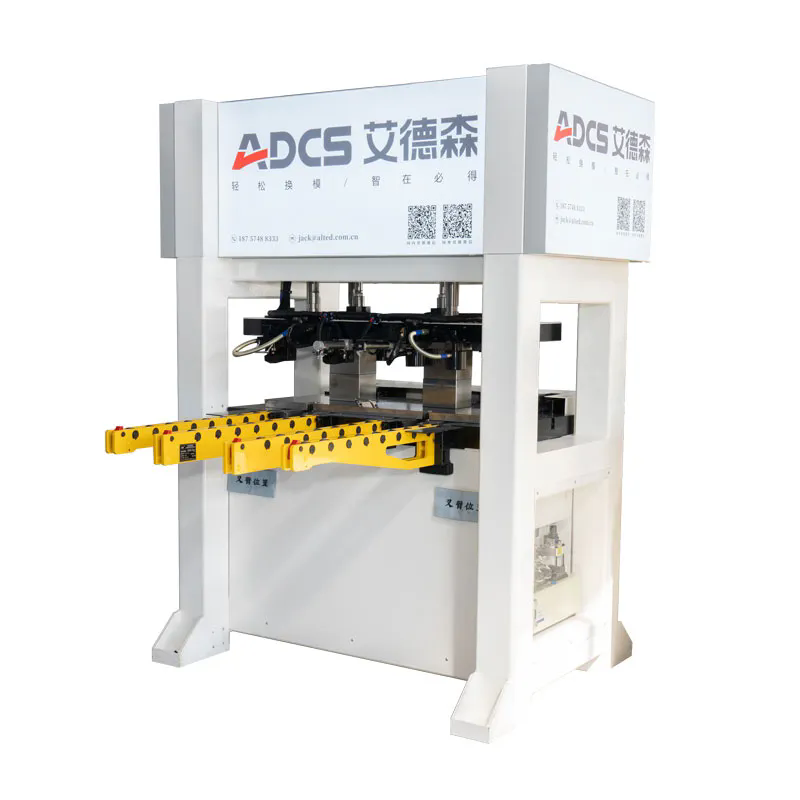Is the Quick Die Change System the Future of Manufacturing Efficiency?
2024-11-12
In the ever-evolving world of manufacturing, efficiency and speed are key to staying competitive. One area that has seen significant advancements in recent years is the die change process in stamping, molding, and other similar operations. The Quick Die Change (QDC) system has emerged as a solution to address these challenges, promising faster turnaround times and increased productivity. But is the Quick Die Change System truly the future of manufacturing efficiency? Let’s take a closer look.
1. What Is a Quick Die Change System?
A Quick Die Change (QDC) system is designed to reduce the amount of time needed to change dies in industrial machines, such as stamping presses or injection molding machines. Dies are specialized tools used to shape or mold materials, and their changeover can sometimes take hours, especially in large-scale production settings.
The core principle behind QDC is to simplify and streamline the process of die installation, alignment, and adjustment, allowing for faster and more efficient swaps between different dies. This involves the use of standardized tooling, automated systems, and precision alignment methods to minimize downtime.
2. How Does a Quick Die Change System Work?
The QDC system incorporates several features and practices to facilitate quick and efficient die changes:
- Standardized Tooling: One of the key elements of a QDC system is the use of standardized, easy-to-install tools and fixtures. This reduces the need for custom adjustments every time a new die is installed.
- Automated Equipment: Many QDC systems incorporate automated handling equipment like cranes, robotic arms, or conveyors to quickly move dies into place, reducing manual labor and the potential for human error.
- Quick-Release Mechanisms: Specialized quick-release mechanisms allow for fast disengagement and re-engagement of dies, helping to cut down on the time spent on manual adjustments.
- Precision Alignment: Automated alignment tools ensure that dies are positioned accurately and quickly, reducing the time spent on manual calibration.
These features, when combined, can drastically cut the time required to change dies—often reducing the changeover time from hours to mere minutes.
3. Why Is the Quick Die Change System Important?
Die changeovers are a crucial part of the manufacturing process, particularly in industries like automotive and electronics, where multiple die configurations are needed for different products. Traditional die change methods can be slow and labor-intensive, leading to increased downtime and lower overall production efficiency.
Here are a few reasons why the Quick Die Change system is so important:
- Reduced Downtime: Traditional die changes can take several hours, which significantly impacts overall productivity. By reducing changeover time, manufacturers can minimize downtime and keep machines running more consistently, leading to higher output.
- Cost Savings: With quicker die changes, manufacturers can produce a higher volume of products in less time, which ultimately leads to cost savings. Fewer machine stoppages and faster production cycles mean that labor and energy costs are reduced.
- Increased Flexibility: A QDC system enables manufacturers to quickly switch between different production runs, making it easier to meet customer demands and introduce new products. This flexibility is especially valuable in industries with short product life cycles or customized orders.
- Improved Quality: Faster die changes also reduce the likelihood of errors that can occur during manual adjustments. The precision offered by QDC systems helps maintain the quality and consistency of the products being manufactured.
4. What Are the Benefits of Implementing a QDC System?
The implementation of a Quick Die Change system brings several advantages to manufacturers. Below are some of the key benefits:
- Increased Productivity: The most obvious benefit of QDC is the increase in overall productivity. Manufacturers can reduce downtime and run machines for longer periods, increasing the overall output of the production line.
- Lower Labor Costs: Because the QDC system reduces the need for manual labor, it can lead to significant reductions in labor costs. Fewer workers are required to handle die changes, and automated systems can complete tasks faster than humans.
- Better Resource Utilization: With quicker die changes, machines spend less time idle, meaning resources are being utilized more efficiently. Additionally, operators can manage multiple machines at once, optimizing workforce allocation.
- Improved Safety: By reducing the manual effort required during the die change process, the QDC system helps mitigate safety risks associated with lifting heavy dies and working with complex machinery. The automation of certain tasks lowers the chance of accidents.
- Environmental Benefits: A more efficient manufacturing process can lead to less waste generation. With faster die changes and improved precision, manufacturers may produce fewer defective parts, reducing material waste.
5. Challenges of Adopting a Quick Die Change System
While the QDC system has many clear advantages, it’s not without its challenges. The initial setup and integration of such a system can be expensive and time-consuming. Here are some potential hurdles manufacturers may face:
- High Initial Investment: Implementing a QDC system often requires significant upfront investment in equipment, training, and infrastructure. For smaller manufacturers or companies with limited budgets, this can be a barrier to adoption.
- Integration with Existing Systems: Older machines or production lines might not be compatible with modern QDC technologies. Retrofitting existing equipment can be costly and complex, requiring careful planning and investment.
- Training Requirements: While QDC systems are designed to be user-friendly, they still require proper training for operators and maintenance personnel. The transition from traditional die-changing methods to a more automated approach requires time and investment in skill development.
- Maintenance and Upkeep: Like any automated system, a QDC system requires regular maintenance and upkeep to ensure optimal performance. Without proper servicing, the system’s efficiency could degrade over time, leading to potential disruptions in production.
6. Is the Quick Die Change System the Future?
Given the increasing demand for faster, more efficient production processes, it’s likely that the Quick Die Change system will continue to play a significant role in the future of manufacturing. The ability to reduce downtime, improve flexibility, and lower production costs makes QDC systems a valuable investment for manufacturers aiming to stay competitive in the global market.
As technology continues to improve, QDC systems will likely become more affordable and easier to integrate into existing production lines. In industries where speed and efficiency are critical—such as automotive, electronics, and aerospace—the Quick Die Change system may very well become the standard.
Conclusion
The Quick Die Change system represents a major leap forward in manufacturing efficiency. By streamlining the die change process, manufacturers can significantly reduce downtime, improve productivity, and increase flexibility, all of which contribute to a more competitive and profitable business model. While challenges remain in terms of initial investment and integration, the potential benefits make the QDC system a worthy consideration for manufacturers looking to stay ahead of the curve in an increasingly fast-paced industry.



